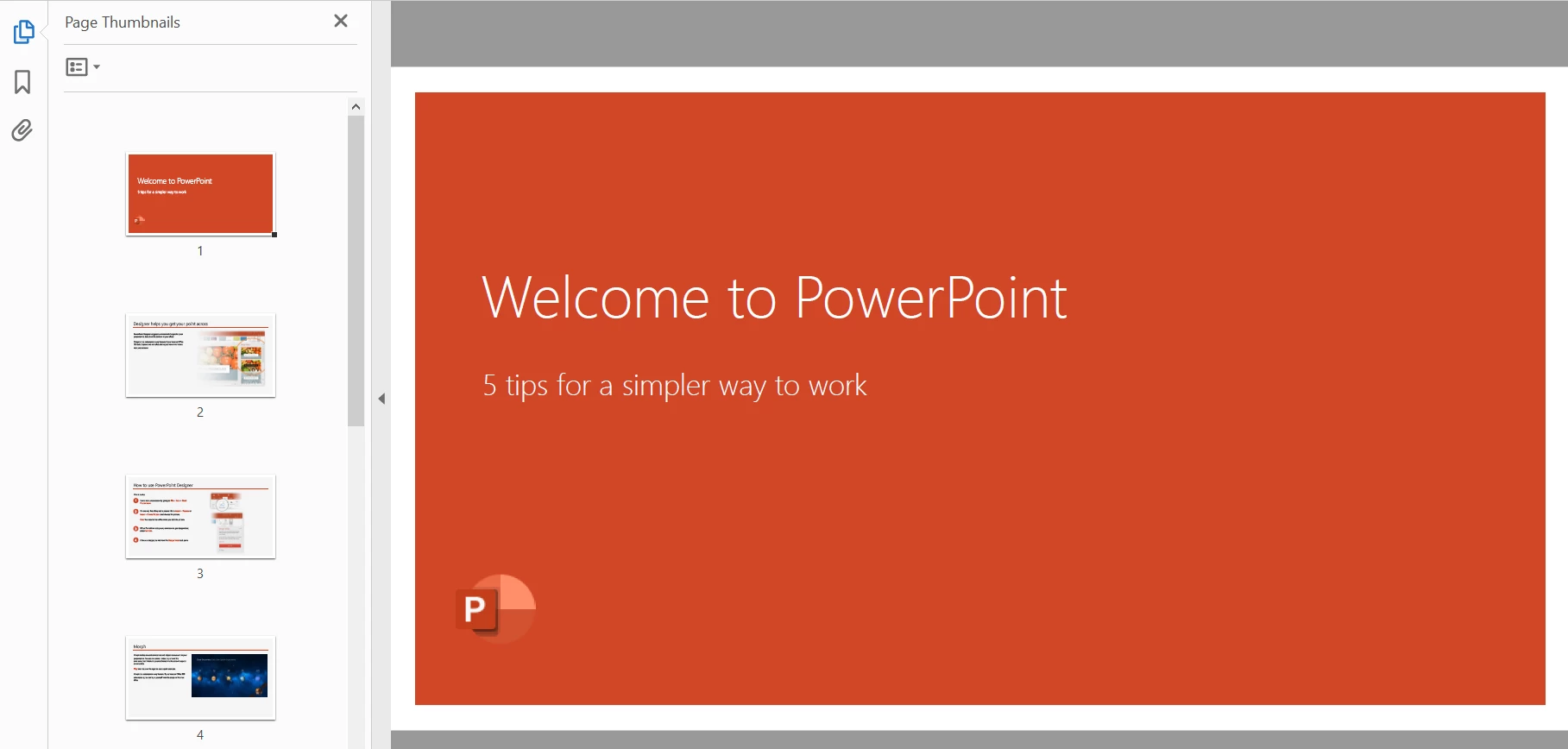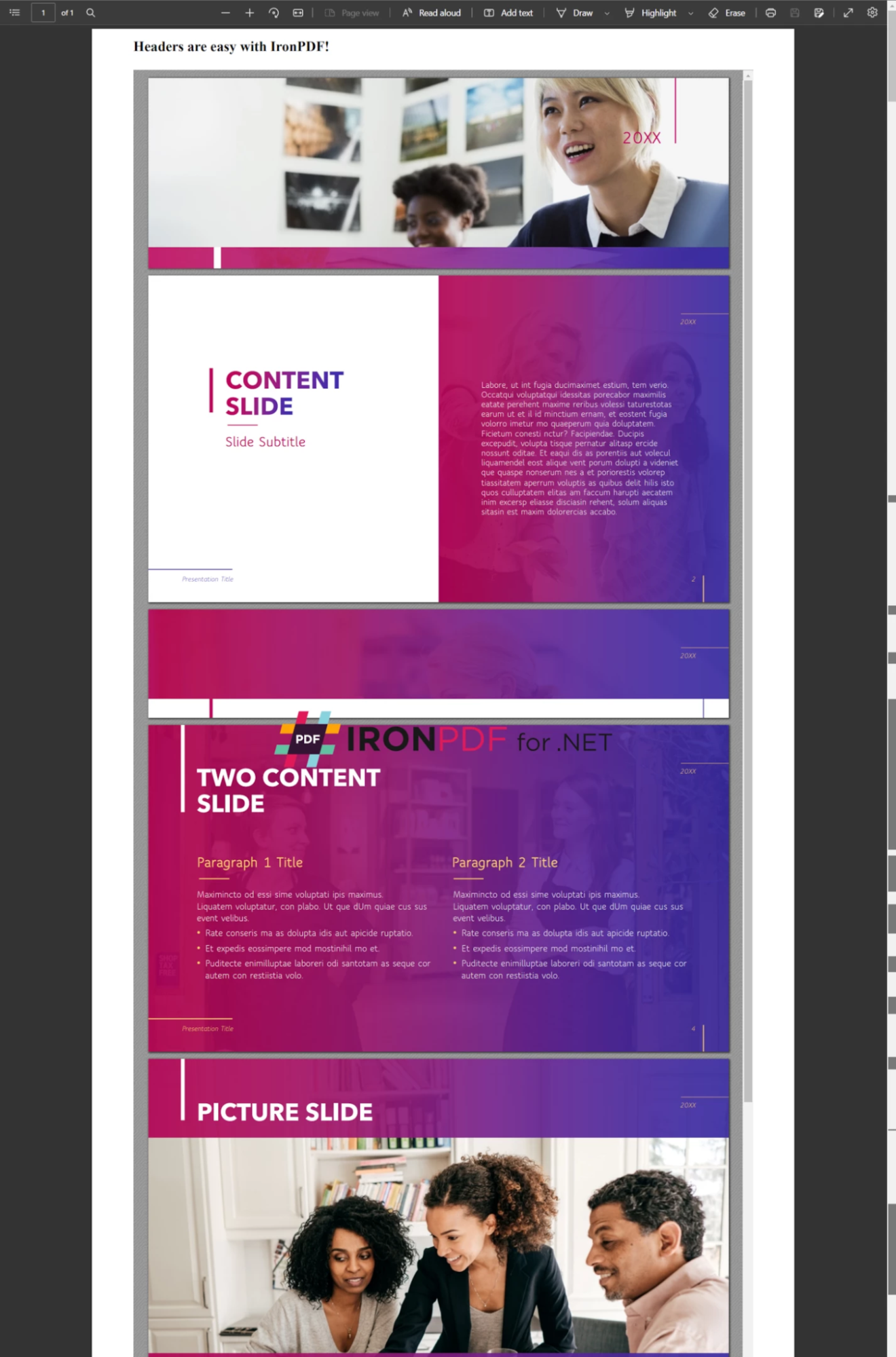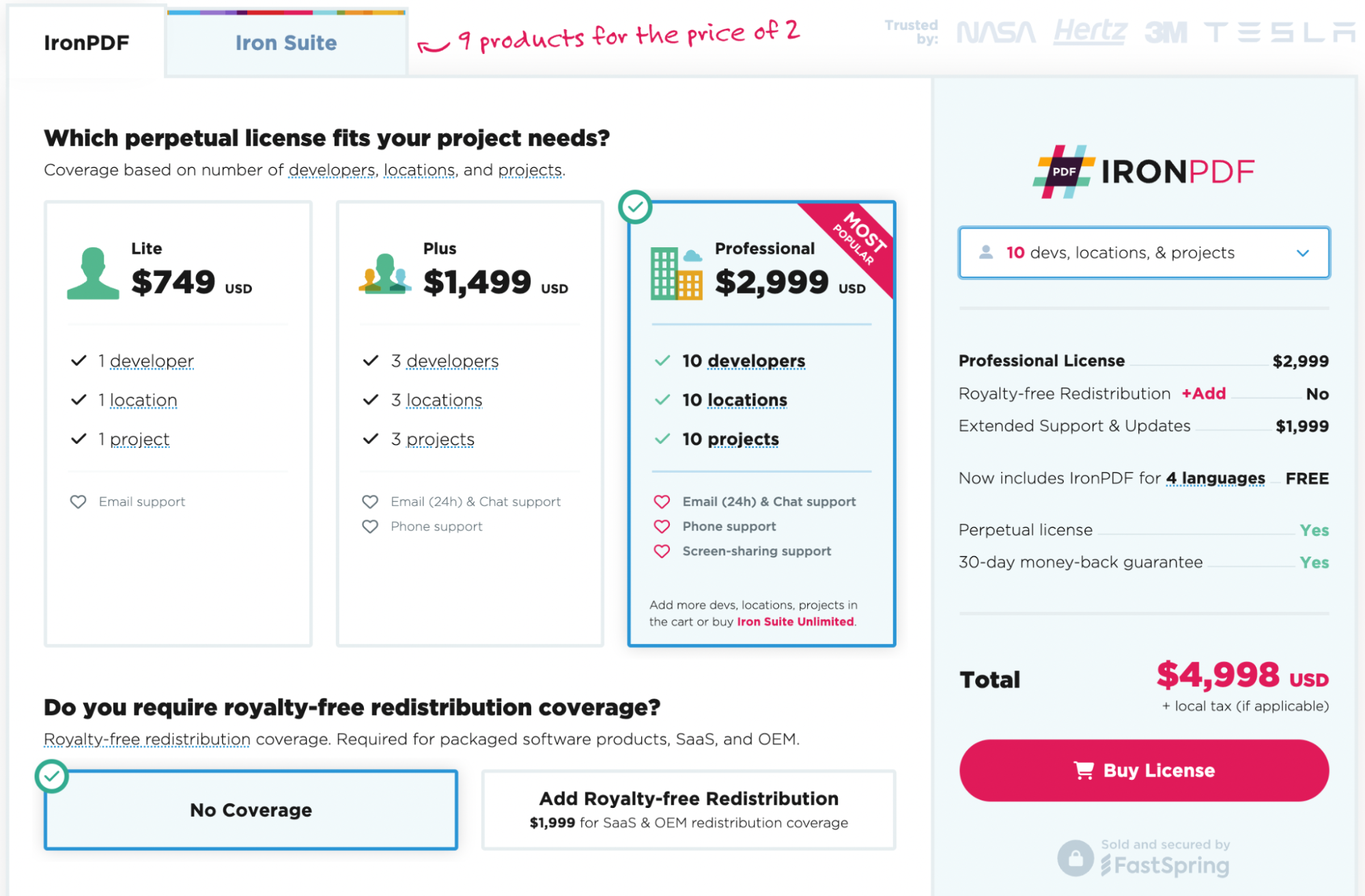Test in production without watermarks.
Works wherever you need it to.
Get 30 days of fully functional product.
Have it up and running in minutes.
Full access to our support engineering team during your product trial
Love them or hate them, PowerPoint presentations are a part of daily office life. However, when it comes to presenting and sharing, a lot can go wrong. Enter the almighty PDF - a universally supported format which preserves the layout of the original document.
In this guide, we’ll explain how to convert PPT to PDF using our feature-rich C# library, IronPDF, as well as recommend a couple of alternative conversion tools which offer basic functionality.
IronPDF is a lightweight .NET PDF library designed specifically with web developers in mind. PDF conversion is just one of many uses - it makes reading, writing, and manipulating PDFs a breeze, and you can use it in your .NET projects for both desktop and web. The best part - it’s free to try out in a development environment.
One of the main advantages of IronPDF is its flexibility. It can be used as a standalone desktop application or integrated into your web application using the IronPDF API. Additionally, IronPDF is compatible with Windows, Mac, and Linux operating systems, making it accessible to a wide range of users.
First of all, open Visual Studio and go to File -> New Project -> Console Application. Enter your project name, choose the location you want to save it to, and hit the Next button. Select the latest .NET Framework and then Create. Once your project is up and running, it’s time to add our library.
IronPDF is easy to use but it’s even easier to install. There are a couple of ways you can do it:
In Visual Studio, in Solution Explorer, right-click References, and then click Manage NuGet Packages. Hit browse and search ‘IronPDF', and install the latest version. If you see this, it’s working:

You can also go to Tools -> NuGet Package Manager -> Packet Manager Console, and enter the following line in the Package Manager Tab:
Install-Package IronPdfFinally, you can get IronPDF directly from the IronPDF package on NuGet. Select the Download Package option from the menu on the right of the page, double-click your download to install it automatically, and reload the Solution to start using it in your project.
Didn’t work? You can find platform-specific help on our NuGet installation guide for IronPDF.
You can also get the IronPDF DLL file straight from us and add it to Visual Studio manually. For full instructions and links to the Windows, MacOS, and Linux DLL packages, check out our IronPDF DLL installation guide.
Always remember to kick off your code with the IronPDF namespace, like this:
using IronPdf;using IronPdf;Imports IronPdfIronPDF generates pixel-perfect PDFs from HTML, so we’ll have to convert our PPT to HTML first. Unfortunately, MS PowerPoint doesn’t support exporting files to HTML directly, so we’ll need to use an online conversion tool. We’ve chosen Zamzar's PPT to HTML converter - simply upload your PPT, select HTML, and click Convert Now.
Now, to begin converting the HTML file to PDF, initialize the ChromePdfRenderer object in Visual Studio. Like this:
ChromePdfRenderer renderer = new ChromePdfRenderer();ChromePdfRenderer renderer = new ChromePdfRenderer();Dim renderer As New ChromePdfRenderer()Then, the RenderHtmlFileAsPdf method is used to convert the HTML file to PDF, with the file path specified as you can see here:
var pdf = renderer.RenderHtmlFileAsPdf(@"C:\Presentation\Presentation.html");var pdf = renderer.RenderHtmlFileAsPdf(@"C:\Presentation\Presentation.html");Dim pdf = renderer.RenderHtmlFileAsPdf("C:\Presentation\Presentation.html")Finally, the SaveAs method is used to save the PDF:
pdf.SaveAs("C:\\PptToPdf.pdf");pdf.SaveAs("C:\\PptToPdf.pdf");pdf.SaveAs("C:\PptToPdf.pdf")And here it is - in just a few lines of code, your PowerPoint file is now a converted PDF file:

IronPDF’s functionality doesn’t stop there, however - with our fully-equipped library, you can fine-tune and customize your presentation.
This section shows how to add a watermark in the PDF as a stamped image, using the ApplyStamp method of IronPDF.
pdf.ApplyStamp(new ImageStamper("https://ironpdf.com/img/products/ironpdf-logo-text-dotnet.svg"));pdf.ApplyStamp(new ImageStamper("https://ironpdf.com/img/products/ironpdf-logo-text-dotnet.svg"));pdf.ApplyStamp(New ImageStamper("https://ironpdf.com/img/products/ironpdf-logo-text-dotnet.svg"))Adding a password to the PDF protects it from unauthorized access. You can set a different password for the user and admin to allow customization of access.
pdf.Password = "EasyPassword";pdf.Password = "EasyPassword";pdf.Password = "EasyPassword"Put the finishing touch on your presentation with a header, using the HtmlHeaderFooter object.
renderer.RenderingOptions.HtmlHeader = new HtmlHeaderFooter()
{
MaxHeight = 20, //millimeters
HtmlFragment = "<h1>Headers are easy with IronPDF!</h1>",
};renderer.RenderingOptions.HtmlHeader = new HtmlHeaderFooter()
{
MaxHeight = 20, //millimeters
HtmlFragment = "<h1>Headers are easy with IronPDF!</h1>",
};IRON VB CONVERTER ERROR developers@ironsoftware.comHere’s how it all looks together:
using IronPdf;
using IronPdf.Editing;
var renderer = new ChromePdfRenderer();
renderer.RenderingOptions.HtmlHeader = new HtmlHeaderFooter()
{
MaxHeight = 20, //millimeters
HtmlFragment = "<h1>Headers are easy with IronPDF!</h1>",
};
var pdf = renderer.RenderHtmlFileAsPdf(@"C:\Presentation\Presentation.html");
pdf.ApplyStamp(new ImageStamper("https://ironpdf.com/img/products/ironpdf-logo-text-dotnet.svg"));
pdf.Password = "EasyPassword";
pdf.SaveAs("C:\\PptToPdf.pdf");using IronPdf;
using IronPdf.Editing;
var renderer = new ChromePdfRenderer();
renderer.RenderingOptions.HtmlHeader = new HtmlHeaderFooter()
{
MaxHeight = 20, //millimeters
HtmlFragment = "<h1>Headers are easy with IronPDF!</h1>",
};
var pdf = renderer.RenderHtmlFileAsPdf(@"C:\Presentation\Presentation.html");
pdf.ApplyStamp(new ImageStamper("https://ironpdf.com/img/products/ironpdf-logo-text-dotnet.svg"));
pdf.Password = "EasyPassword";
pdf.SaveAs("C:\\PptToPdf.pdf");IRON VB CONVERTER ERROR developers@ironsoftware.comAnd here’s the final product:

There are many free, if limited, tools which allow you to convert PowerPoint presentations, including ways to create a PDF online. Here are some alternative PPT to PDF converter options.
Microsoft PowerPoint has been a cornerstone of presentations for decades, and it allows you to export your document as a PDF easily. However, it lacks the customization features as described in the above steps.
Soda PDF is an online tool which allows you to convert PPT to PDF, as well as many other features. However, unlike the other tools on this list, it is not free to use.
Creators of the PDF format, Adobe are rightfully considered the industry standard when it comes to generating PDFs. Their free online tool lets you turn PPT files into PDFs, but the limited customization options require paid access.
SmallPDF is a popular online tool that offers a range of PDF editing features, including the ability to convert PPT into PDF. One of the main advantages of SmallPDF is its convenience. Because it is a web-based tool, you can access it from any device with an internet connection, without needing to download or install any software.
Microsoft Word, Adobe, and online conversion tools are easy to use and offer a range of basic editing features. However, for a more powerful PDF redaction tool, IronPDF offers flexibility that cannot be matched.
And PPT to PDF conversions are just the start - with PDF formatting tools, built-in security and compliance features, and more, IronPDF is the number one tool for all of your PDF document needs.
Ready to get your hands on IronPDF? You can start with our 30-day free trial of IronPDF. It’s also completely free to use for development purposes so you can really get to see what it’s made of. And if you like what you see, IronPDF starts as low as $749 for licensing. For even bigger savings, check out the Iron Suite bundle where you can get all nine Iron Software tools for the price of two. Happy coding!
